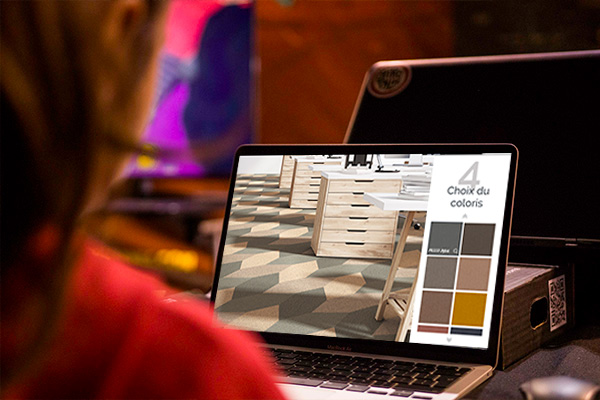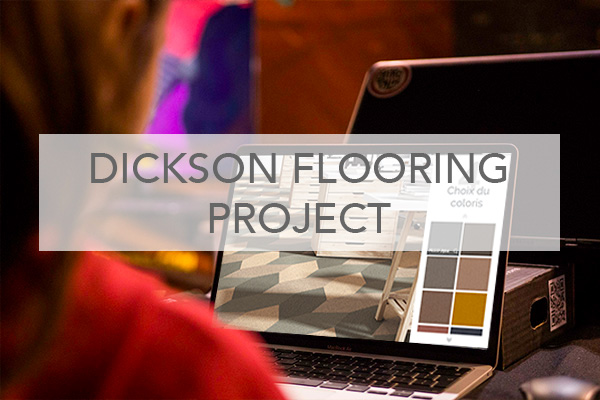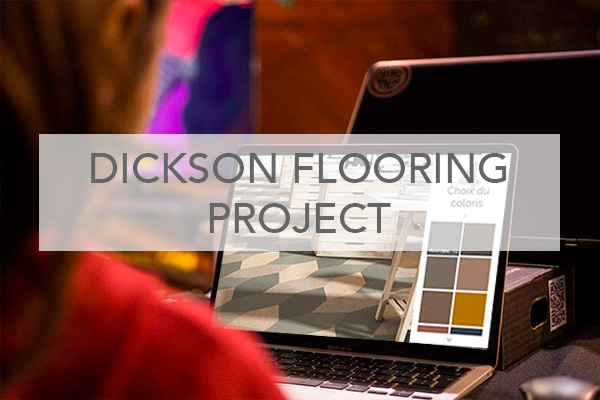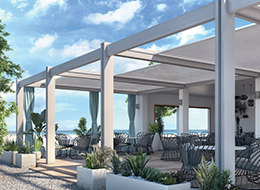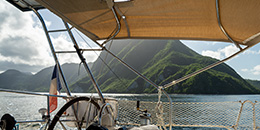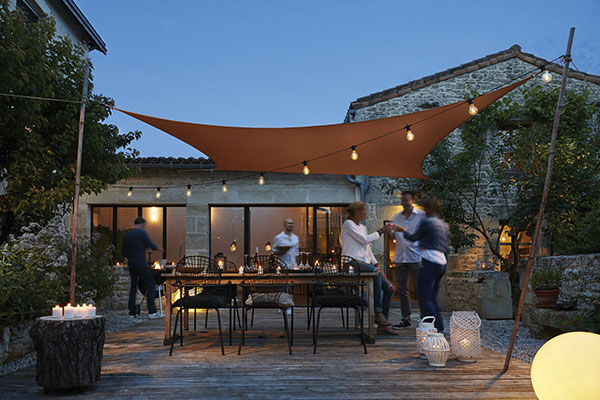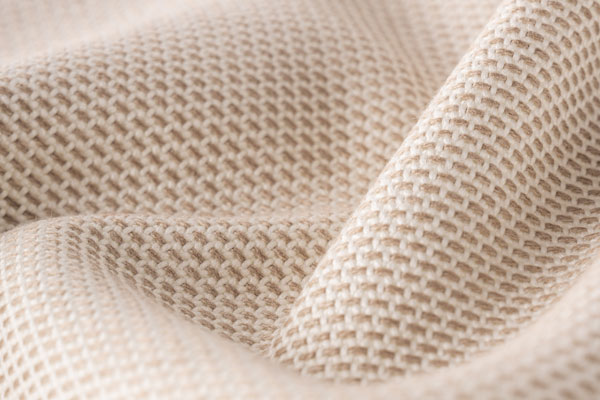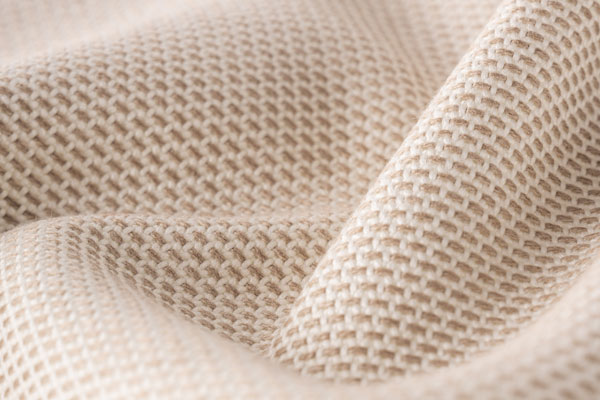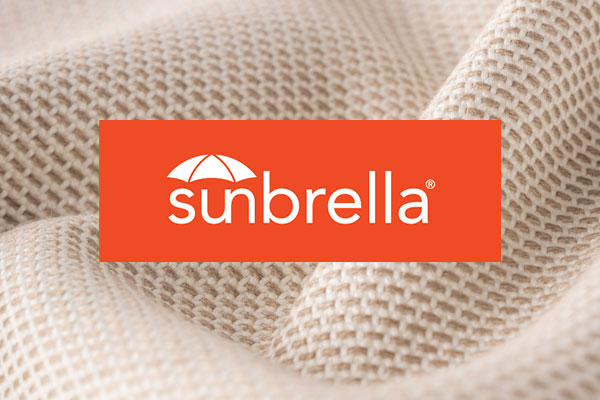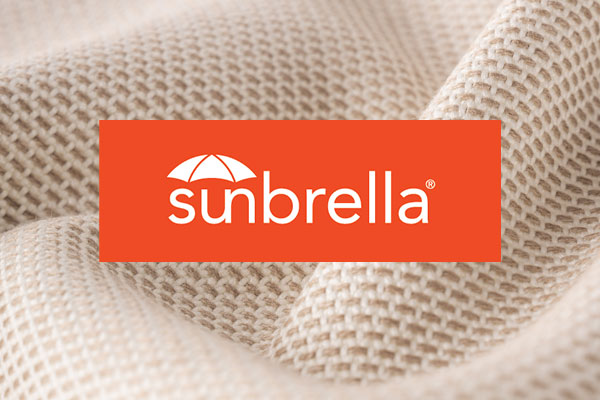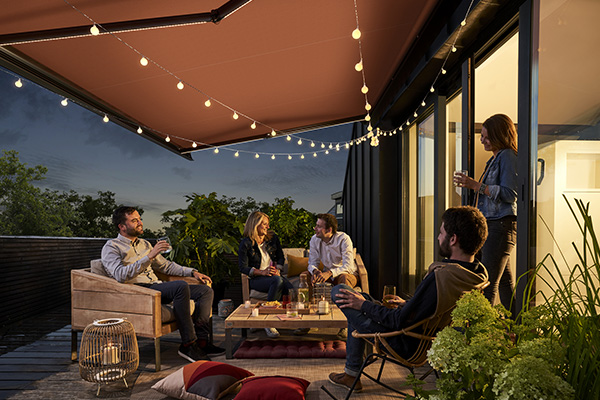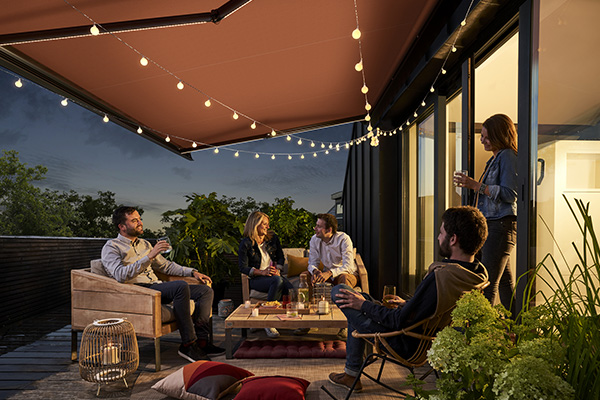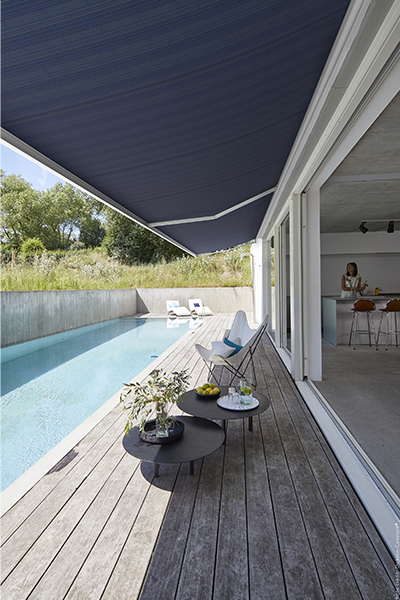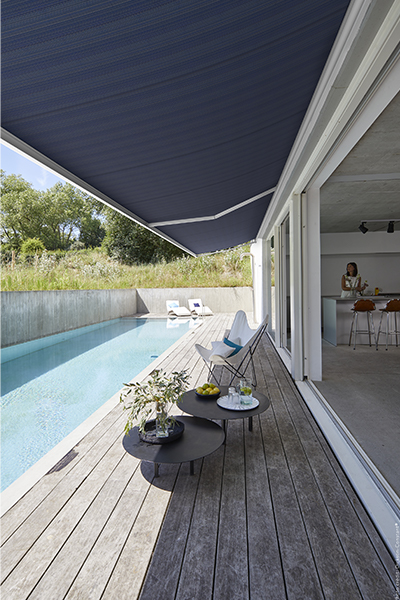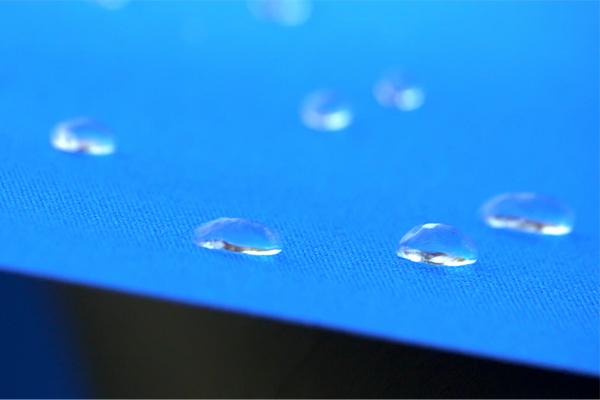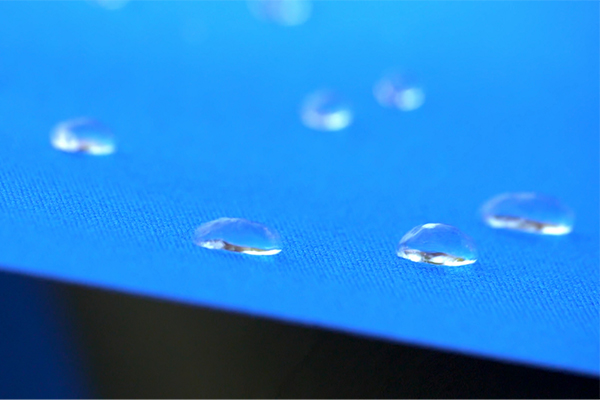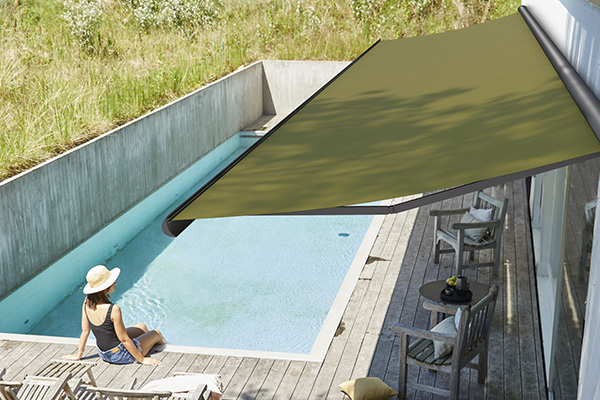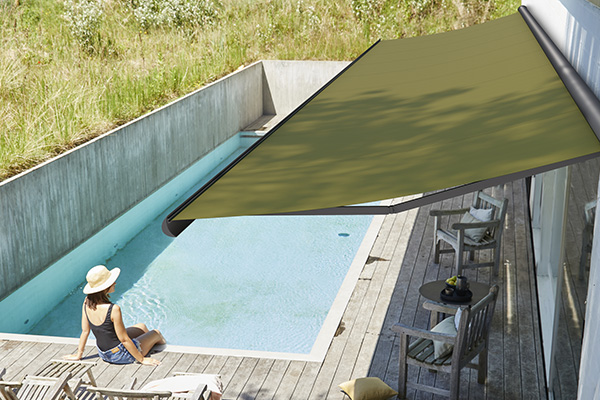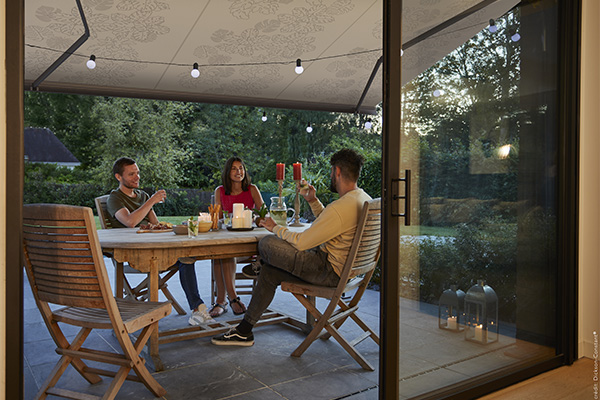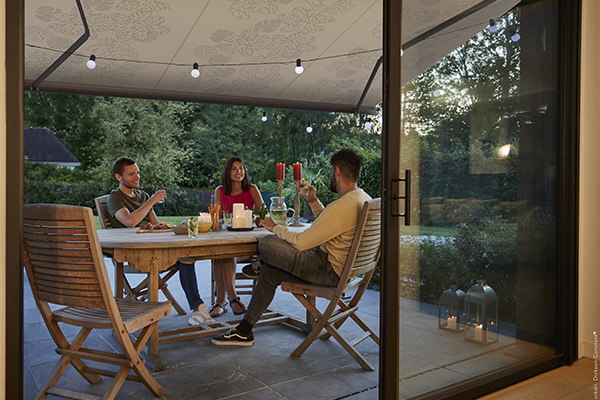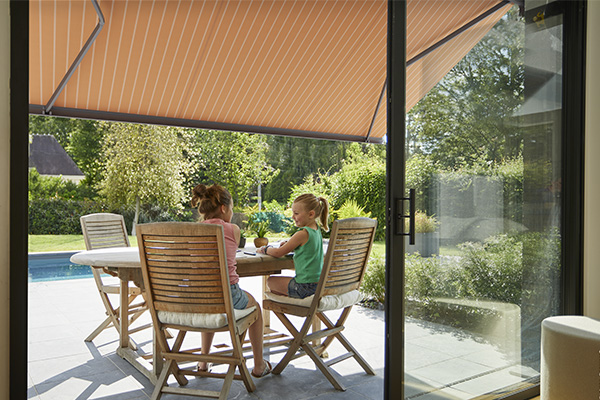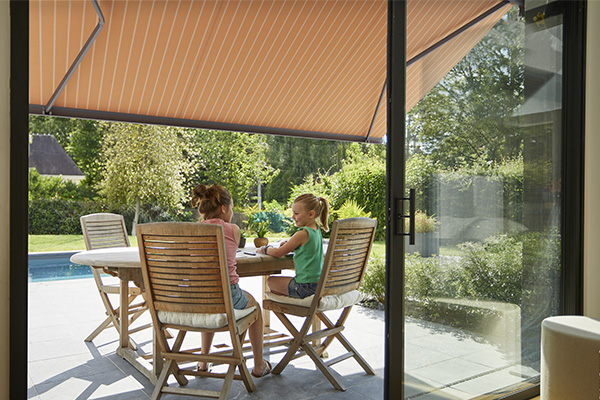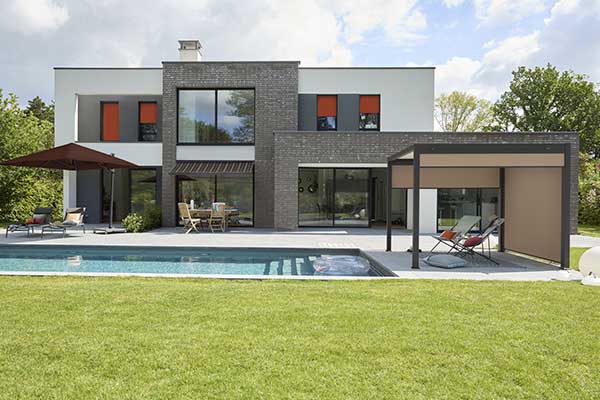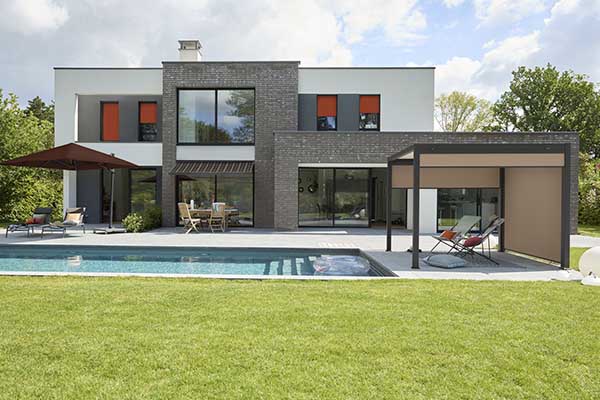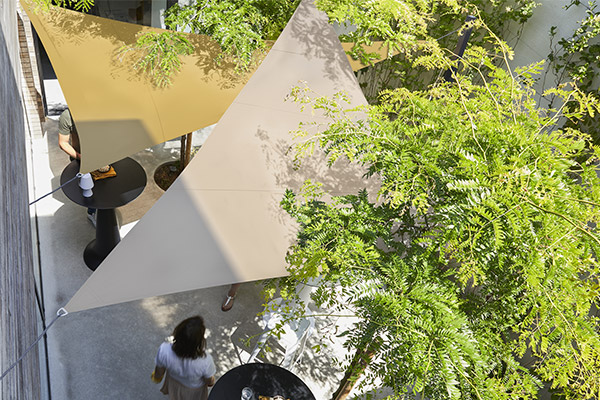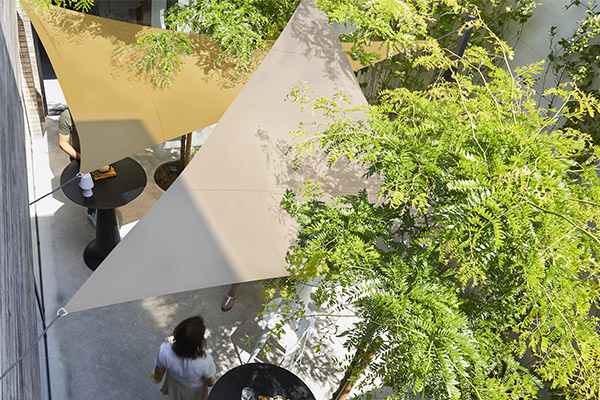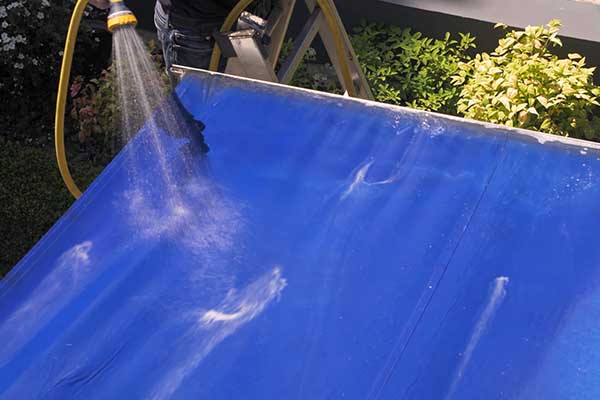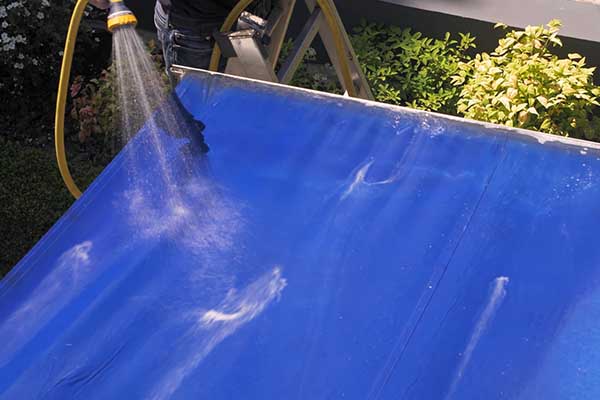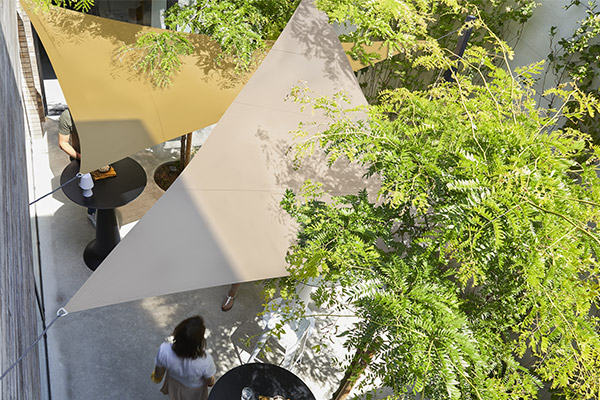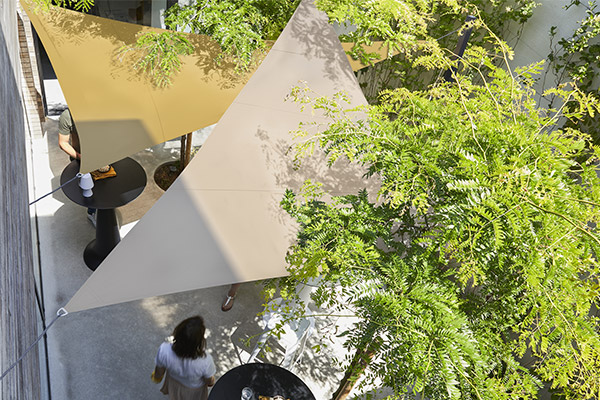Acrylic fabrics
The result is a range of fabrics that are widely represented on the market, have a low carbon footprint, are made in Europe and are designed to last.
These are the most popular and the most successful fabrics, both for individuals and professionals and this is no coincidence! This synthetic fabric, equipped with the latest technological innovations, has major advantages:
- Optimum solar protection. For example, Orchestra Dickson fabrics filter out at least 90% of UV rays and are guaranteed for 10 years.
- They are treated against moisture and mould.
- They are very resistant to wind and bad weather, as is the case with Max folding arm awning fabrics, with its reinforced waterproof treatment and Infinity, thanks to its Dickson Resilient System technology.
- Very good colour fastness, ensured by the solution-dyed acrylic fibre: the colour pigments are mixed into the acrylic solution before spinning. The obtained thread is dyed to the very core of the fibre and guarantees excellent durability of the fabric over time.
- A wide range of very trendy colours; there are no less than 173 colours available at Dickson for Orchestra fabrics, not forgetting the Opera Jacquard fabrics with very elaborate patterns. Enough to give your home a real personality.
- Most of them have Oekotex certification! The guarantee of a fabric free from harmful substances and respectful of your health.
The result is fabrics that are widely represented on the market, with a low carbon footprint, because they are made in Europe and designed to last.
Polypropylene fabrics
Probably the most affordable fabric on the market with very satisfactory properties, at least in the first 2 years of use. It will be necessary to apply an additional water-repellent and antifungal treatment over time to maintain its characteristics. It is therefore suitable for occasional use and on a facade that isn't very exposed to bad weather.
Polyester fabrics
Their quality has certainly evolved, and some polyester fabrics (too few) stand out from the crowd! Overall, these fabrics have little resistance to tearing and remain very sensitive to UV rays. These fabrics are therefore interesting in terms of price and recyclability, but they quickly prove to be disappointing in the long term as their performance drops drastically after 2-3 years.
Micro-perforated PVC fabrics
Another option is micro-perforated PVC fabric. These fabrics are all the rage but be careful: even if they shade you from the sun, these fabrics won’t protect you from short-lived showers. Made from a polyester base then coated with PVC, these fabrics provide satisfactory shade by blocking a good part of the heat and promoting its escape thanks to the microholes. The challenge is to find the right balance between light and heat input.
Dickson’s SWK15 fabric, with 15% openness, blocks up to 83% of heat and is suitable for most outdoor installations: vertical blind, shade sail, canopies, pergola awnings and conservatory awnings. It is without doubt the lightest and most resistant on the market!






